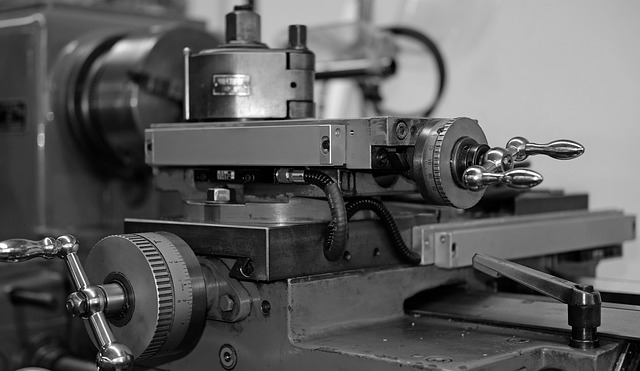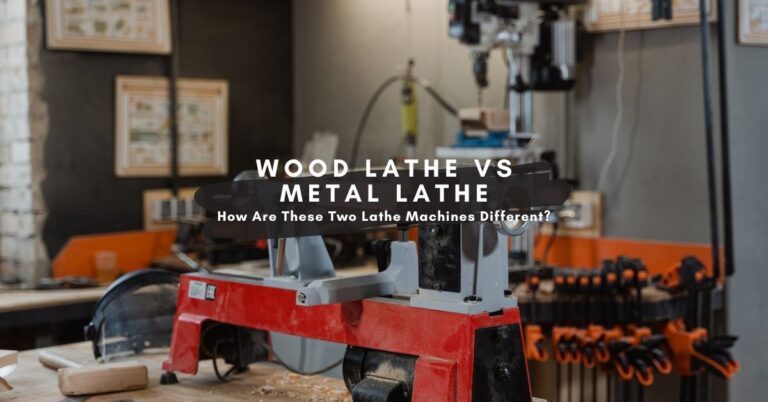What is an Engine Lathe & How Does It Work – Parts of Engine Lathe Machine
Engine Lathe History & Background
Lathe machines are one of the oldest tools present in the human inventory. Pieces of evidence of its first usage date back to circa 1300 BC in ancient Egypt, which was then called a two-person lathe – where one person used to turn the wood using a rope while the other would cut it into the desired shape using sharp tools.
Further improvement was initiated by the Ancient Romans when they added the turning bow and the paddle to the lathe machine. The first engine lathe machine was developed during the Industrial Revolution in the late eighteenth century when steam engines and water wheels were used to run the lathe machines. Since then, the lathe has evolved significantly and is now considered to be one of the most important machines in human industrial history.
Definition and Principles of Engine Lathe Machine
A lathe machine is said to be a tool that removes undesired material from a rotating block, called a workpiece, in the form of chips. The tool used for cutting is traversed back and forth to feed it deep into the workpiece. The workpiece can be either wood or metal.
It consists of various parts, which are listed as follows:
- Bed
- Headstock
- Tailstock
- Carriage
- Saddle
- Cross Slide
- Compound Rest
- Tool Post
- Apron
- Chuck
- Feed rod
- Lead screw, and
- Spindle
The working principle of the lathe machine is pretty straightforward – it works on the principle of rotating the workpiece and cutting with a fixed tool. In metal ware, the main function of the lathe is to remove the unwanted part of the metal by cutting it at a certain angle, giving it the required shape and size.
There are many types of lathes, but in this article, we will focus our attention on the most advanced form of the lathe machine – the engine lathe.
What Is an Engine Lathe? How Does It Work?
An engine lathe is the most common type of machine used for metal cutting purposes. In the past, it was driven using a steam engine or a water wheel, hence the coinage of the name “Engine Lathe.” Early engine lathes are equipped with elements closer to the mechanical approach, while the modern engine lathe is powered by small motors mounted on a workbench. Further, the engine lathe has advanced by undergoing computerization – they are now equipped with gadgets called Computer Numerical Control (CNC), allowing them to perform complex turnings with fewer manual operations.
How Does an Engine Lathe Work?
The engine lathe works on the principle of the lathe machine. The metal block or workpiece is clamped by the centers in the lathe and then rotated, while the fixed cutting tool placed inside cuts it at a certain angle to get the desired shape and texture. The machine is equipped with gears, a stepped pulley, tailstock, and a carriage.
The gears help in powering the transport and cushioning the cutting tools, while the tailstock supports hole-making within the spindle. Finally, the stepped pulley operates the spindle at multiple speeds.
Construction of the Engine Lathe:
The basic component of the lathe is its headstock, where all the gear selectors are present. There are also speed and feed selectors where the feed is determined by the gears.
Another important part of the lathe is the carriage, which controls the movement of the cutting tool in longitude, back, and latitude forth. You can adjust the compound rest and thereby make use of the angular movement here. The carriage is also equipped with an automatic feed lever, which controls the longitudinal and lateral feed.
The modern engine lathes are equipped with an emergency stop button, which cuts off all the power to the lathe in case of an accident or emergency. 3 and 4-jaw chucks can also be used to control the movement of the jaws, with the help of a single chuck key to constrict your work. The carriage also has a tool post containing the tools, where we can adjust the height and actual angle of the cutting tool as well.
There is also a tailstock which is used for hole-making operations, drilling, reaming, and tapping or holding the metal part between the centers or stabilizing long shafts. Further, the lead screw and the feed screw turn independently on the machine – while the lead screw is used during the threading process, the feed screw is used to dictate how fast it is feeding.
The bed is the platform where all the other equipment is mounted. The smooth functioning of the engine lathe requires regular maintenance and steady lubrication to prevent rusting and, therefore, damage to significant parts of the machine.
Operations of Engine Lathe Machine
An engine lathe is a versatile machine, and a multitude of operations can be conducted with it. The most prominent are listed as follows-
- Boring: It is the process of enlarging a hole in the metal part. It is implemented by the engine lathe to construct gun barrels and engine cylinders.
- Drilling: Drilling is the process in which a hole of a circular cross-section is cut out in the metal part.
- Turning: The major operation of an engine lathe is the process of turning. Here, the metal rotates while the undesired part is removed. Nowadays, with the help of CNC engine lathes, complex turnings can also be processed easily.
- Facing; This process leads to the smoothening and polishing of the metal pieces to give them a more finished look.
Apart from the above functions, any operations related to metal work that is from knurling to threading, can be performed with the help of an engine lathe machine. Mostly, it is being used in creating shapes and parts for the automobile industry.
Engine Lathe Applications and Uses in Industry
The engine lathe is extensively used in the heavy metal industry as well as other factory complexes for the smooth cutting and polishing of metal ware. Further, it is also used in the automobile and aviation industry for making the shapes and parts necessary for building cars, bikes, airplanes, trains, etc.
Manual labor is hired to run the lathe machine in some factories. Still, mostly computerized models like CNCs are implemented for modern-day operations in most industrially advanced countries like the US.
Precautionary Measures In Lathe Tool Usage

The lathe might be a useful tool, but it should not be mishandled. An engine lathe has a moving chuck and stock and is full of sharp blades and edges. So, think twice before doing any personal skills with the machine!
Proper expertise is very essential for the running of the machine. The factory owners must ensure that the workers are well-trained by expert professionals on how to manage the lathe machines. Some pieces of the metal stock are ejected during precision cutting and might hit you, so exercise caution as they are extremely hot and sharp.
Workers should wear safety glasses to protect their eyes and must use gloves when manhandling the equipment. In case of any emergencies or accidents, there is always the kill-switch button to stop the machine altogether.
The machine needs regular maintenance and proper lubrication to function effectively. A smooth machine will increase your chances of not getting perished in action.
Conclusion
The engine lathes are the most important and versatile machines in human history, covering a wide range of sectors from metal work to wood chipping. Two centuries of evolution have not stopped its functioning, and it continues to digitalize to perform more complex functions. One issue is its portability, owing to its vast size and therefore, efforts and research are being done to ensure that the industrial sector can make use of a completely automated and miniaturized engine lathe machine soon.
Hi, my name is Charles Winn, A DIY enthusiast, Mechanical Engineer. I was born and raised in Springfield, Missouri. I am also a father of two troublemaker kids, a terrible photographer, and I love to play chess.








